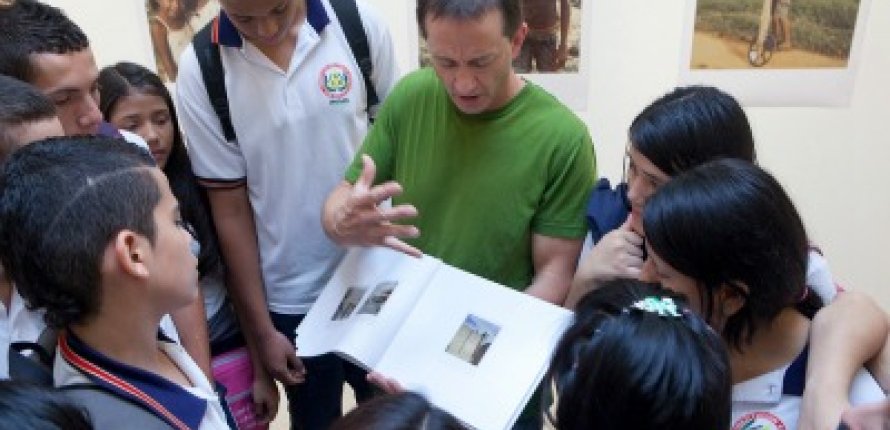No Dar Papaya - Capturing the Beauty of Colombia in Polaroid

Matthew O’Brien, Independent Scholar
2010 Core Fulbright Scholar to Colombia
When I learned that I was awarded a Fulbright U.S. Scholar grant to go to Colombia in 2010, I was elated. It would give me the opportunity to continue work on a daunting project, which I had begun years before: trying to convey the beauty, diversity, and distinctive character of the country through Polaroid photographs.
As an independent scholar, I first went to Colombia in 2003 to photograph a project that explored Colombia through the prism of beauty contests. Through my friendships with Colombians in the Bay Area, I knew there was more to Colombia than how it was portrayed by U.S. media, and I was very interested in experiencing the country myself. I looked for a way to go other than in the role of tourist because I wanted a more participatory experience, and photographing the beauty contests was my path. It seemed like it would be an interesting way to explore many societal and cultural themes, and I would be able to interest publications in the work. I was invited back the following year to exhibit that work and to teach at the University of Medellin. Apparently, things went well because Juan Alberto Gaviria, of the Centro Colombo Americano, who had organized the exhibitions and workshops, encouraged me to apply for a Fulbright.
Twice when I applied I was made an alternate. The third time I was awarded the grant—there’s something to be said for persistence! In the meantime, I had been to Colombia several more times, and what had begun as a few Polaroid photos made in 2003 had turned into a career project. It is difficult to know where inspiration comes from, but I found myself compelled to try to convey some of the beauty and creativity that I was experiencing all around me through my photography. My Fulbright was going to give me five months to dedicate myself to the project and to teaching.
Based in Medellín, I taught at several institutions. I had been teaching photography for years in the United States, which served me well in Colombia, but there are notable differences, besides the language—I taught in Spanish, which I have been speaking all of my adult life. In Colombia, students don’t have as much access to photography equipment nor the opportunity to learn from experienced photographers. I think one result of that is the tremendous enthusiasm of the students. We ended the semester with a gallery show of the students’ work. It was very gratifying to see the students, many with their families, proud of their accomplishments and of their artwork. Unbeknownst to me, my class created a beautiful little book full of images from our photographic field trips together and presented it to me the night of the opening. On the back cover, it says, “Thank you for making this unforgettable experience in our growth as photographers as well as people.” I was very moved.
When teaching allowed, I traveled to different regions because one of my goals with the project was to show some of the remarkable diversity, both geographic and cultural, of Colombia. One of the wonderful things about being a scholar is that you are in a foreign country, but instead of being an observer, you are a participant. You have a job, and the interactions you have with students and colleagues can be enriching for everyone. I’m still in touch with many colleagues, students, and institutions from when I was in Colombia.
Last year I was able to share the work I created in Colombia with the Colombian public (and students and colleagues from during my fellowship) through exhibitions and the publication of the book No Dar Papaya. It was a wonderful experience: in a country that is most often portrayed in the media through stories of violence, drug trafficking, and related horrors, I was able to share with Colombians my vision of the beauty of their country. On many different occasions, people thanked me for creating a body of work that is about the good things about Colombia and not its problems. It was very gratifying that I could hold up a mirror to a society and help people recognize some of the wonderful things about their country that perhaps they hadn’t appreciated, that it took an outsider’s eyes to help them to see.
I was very encouraged by the public’s response, and now, in the Fulbright spirit of cultural exchange, I want to share that vision of Colombia with the American public. I believe that as we increase our understanding of the world around us, especially of our neighbors in Latin America, we increase our empathy as well, and we are in such a better position to make good decisions as a nation.
Matt O’Brien can be contacted via email: mattobosino@gmail.com
